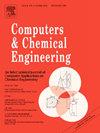Computer-aided molecular design by aligning generative diffusion models: Perspectives and challenges
IF 3.9
2区 工程技术
Q2 COMPUTER SCIENCE, INTERDISCIPLINARY APPLICATIONS
引用次数: 0
Abstract
Deep generative models like diffusion models have generated significant interest in computer-aided molecular design by enabling the automated generation of novel molecular structures. This manuscript aims to highlight the potential of diffusion models in computer-aided molecular design (CAMD) while addressing key limitations in their practical implementation. Diffusion models trained for specific molecular design problems can suffer for design tasks with alternate desired property requirements. To address this challenge, we provide perspectives on the integration of generative diffusion models with optimization methods for CAMD. We examine how pretrained equivariant diffusion models can be effectively aligned with text-guided molecular generation through optimization in the latent space. Computational experiments targeting drug design demonstrate the framework's capability of generating valid molecular structures that satisfy multiple objectives. This work underscores the potential of combining pretrained generative models with gradient-free optimization methods like genetic algorithms to enhance molecular design precision without incurring significant computational costs associated with finetuning diffusion models. Beyond highlighting the practical utility of diffusion models in CAMD, we identify key challenges encountered while adopting these models and propose future research directions to address them, providing a comprehensive roadmap for advancing the field of computational molecular design.
求助全文
约1分钟内获得全文
求助全文
来源期刊

Computers & Chemical Engineering
工程技术-工程:化工
CiteScore
8.70
自引率
14.00%
发文量
374
审稿时长
70 days
期刊介绍:
Computers & Chemical Engineering is primarily a journal of record for new developments in the application of computing and systems technology to chemical engineering problems.
 求助内容:
求助内容: 应助结果提醒方式:
应助结果提醒方式:


